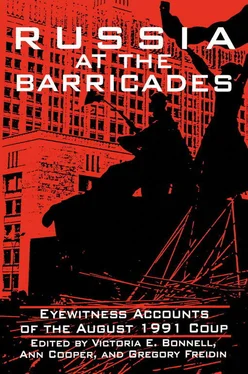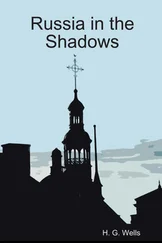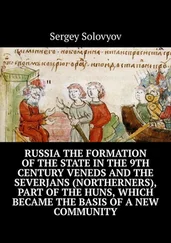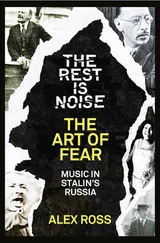Yet it was also obvious that the conspirators wanted to give a constitutional gloss to their actions, for the benefit of the Soviet population as much as the rest of the world. Although in clear violation of the Law on the State of Emergency, [13]they claimed to be acting in accordance with certain articles of the USSR Constitution (adopted in 1977, but much amended since 1988). Article 127(7) of the Constitution provided for a transfer of power to the Vice President of the USSR if the President was for any reason “unable to continue to execute his duties.” (Throughout the coup, the Committee would maintain the pretext that Gorbachev was incapacitated by health problems.) Ironically, this effort to formulate a constitutional justification for the seizure of power suggests that, as one commentator observed, “the reform process begun by Gorbachev ha[d] been effective in introducing some semblance of the rule of law in the USSR.” [14]
By mid-morning on Monday, large numbers of tanks and APCs and truckloads of soldiers had begun to enter the city of Moscow. Later that day, both Moscow and Leningrad (now St. Petersburg) were placed under martial law. Although martial law was not formally imposed in the Baltic republics, troops began moving there, too, and the commander of the Baltic Military District declared that he was assuming control of the region. [15]
Popular resistance to the takeover did not appear immediately. The galvanizing force was Boris Yeltsin, the newly elected President of the Russian Federation. On Monday morning Yeltsin issued an “Appeal to the Citizens of Russia,” denouncing the takeover as illegal and calling for popular resistance, including a general strike. At midday Yeltsin mounted a tank near the building known as the White House (the House of Soviets, which housed the Russian government) and made an appeal to soldiers and officers, exhorting them to give their allegiance to the government of the Russian Federation.
In the late afternoon, at around 5:00 P.M. the Emergency Committee held a televised press conference, open to Soviet and foreign press. Speaking in a booming, authoritative voice, but with his hands visibly trembling, Vice President Yanaev, ostensibly the leader of the coup, offered the junta’s case for the takeover. Without producing any evidence for his assertion, Yanaev repeatedly declared that Gorbachev was ill and would eventually, Yanaev hoped, resume his duties.
That same evening, in one of those odd twists that abounded during the coup, the image of Yeltsin on a tank, captured by a CNN camera, was beamed to millions of Soviet viewers on the news program “Vremia.” This icon of defiance was part of a remarkable five-minute segment on “Vremia” about the appearance of a democratic resistance to the coup in the country’s capital. Put together by television journalist Sergei Medvedev, the short segment conveyed a vast amount of information: the tanks rolling down the streets of Moscow, Yeltsin’s “Appeal to the Citizens of Russia,” the building of barricades, and the massing of people determined to defend the White House from attack. Medvedev’s report on the evening news, following a taped rebroadcast of the Emergency Committee’s press conference, helped to turn the tide against the coup d’état. [16]
As motorized armor converged on the streets of Moscow—over six hundred pieces, not counting the trucks carrying soldiers in full battle gear—people began erecting barricades, some in Manezh Square (a large plaza near Red Square where big rallies are held) and many more outside the White House. In some cases, people stopped the movement of tanks and APCs by forming a human chain.
Many among the first barricade-builders understood that the putschists were using a tried-and-true Soviet technique, one that had been used successfully all over Eastern Europe in the years after World War II: while tanks surround the government headquarters, a junta offers the alternative of “national salvation” through Party-imposed order. Most recently the scenario had been employed in Vilnius, Lithuania, in January 1991. This time, however—unlike Hungary in 1956, Czechoslovakia in 1968, and Poland in 1981, where coups d’état had been carried out under the cover of the Cold War and with totalitarian controls—Lithuania stood firm. Indeed, the Lithuanians enjoyed broad and vocal public support among Russia’s intelligentsia and democratic politicians, and the “Committee for National Salvation” failed to take power.
Thanks to the Vilnius example, and to Sergei Medvedev’s brief but incisive “Vremia” report about the barricade-building in Moscow, Russian citizens knew what they had to do: defend the White House, the seat of their freely elected government. That the putschists expected to succeed in Moscow (where close to 80 percent had voted to elect Yeltsin President) [17]with a plan that had not worked in Vilnius speaks volumes about the plotters’ general competence, political imagination, and horizons.
A major change in the alignment of forces occurred as early as 10:00 P.M. on Monday night, when several tanks from the Taman Division, stationed in the vicinity of the White House, declared their loyalty to Russia and moved to defend the building, cheered on by a large crowd that had been gathering since the early afternoon. An hour later, eight armored scout vehicles flying the Russian tricolor arrived to protect the White House; they were led by Major General Aleksandr Lebed, under orders from the commander of the airborne paratroop forces, Colonel General Pavel Grachev. [18]These were the first indications of divided loyalties within the military.
Meanwhile, in Leningrad, Mayor Anatolii Sobchak had hastily returned from Moscow to take charge of the democratic resistance. One of his first acts was to reach an agreement with local military officers to keep tanks and APCs out of the city. In the evening he delivered a rousing televised speech, calling for resistance and urging people to attend a protest rally the following day. From that time on, the Leningrad television station transmitted information in support of the democratic resistance.
On August 20, the second day of the coup, large rallies were held in Leningrad and Moscow. The Leningrad rally, attended by an estimated 130,000 to 300,000 people, took place in Palace Square. The Moscow rally, variously estimated at 70,000 to 150,000 people, was held at noon in front of the White House. [19]Yeltsin and other major political figures from the democratic resistance addressed the Moscow rally and appealed to citizens to defend the White House against an imminent military attack. [20]As many as 70,000 people—among them students and young people, middle-class Muscovites in their thirties and forties, and a large contingent of veterans of the war in Afghanistan—responded to Yeltsin’s call. They streamed to the White House and, despite the curfew declared by the Military Commandant of Moscow, they stayed there through the night, forming self-defense units.
An attack on the White House was expected in the early hours of Wednesday morning. Shortly after midnight, shots rang out about half a mile away: a column of APCs had found itself trapped by the barricades blocking an underpass a couple of blocks from the U.S. Embassy. As the APCs tried to ram through a row of trolleycars, a mëlée ensued in which three young men died defending the barricade. This incident notwithstanding, evidence indicates that there was no concerted attack mounted on the seat of Russia’s government, although an attack—a brutal one—had been planned and ordered. Soon afterward, tanks and APCs began to depart from the city. At 9:25 A.M., Marshal Yazov, one of the plotters, resigned his post, and the coup leadership, or what remained of it, rapidly collapsed.
On Wednesday morning an emergency session of the Supreme Soviet of Russia convened at the White House. A high-level delegation from the Russian government was dispatched to the Crimea to rescue Gorbachev and his family, who would return to Moscow shortly after midnight. Meanwhile, most of the plotters were arrested.
Читать дальше












